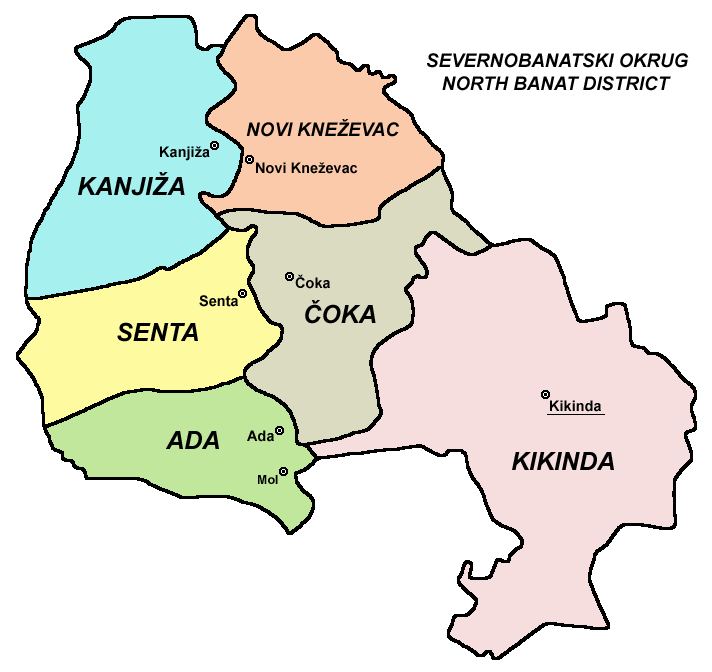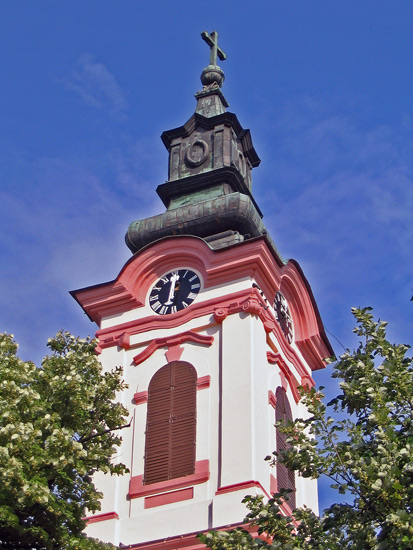|
List Of Cities, Towns And Villages In Vojvodina
This is a list of cities, towns and villages in Vojvodina, a province of Serbia. List of largest cities and towns in Vojvodina List of urban settlements in Vojvodina List of all urban settlements (cities and towns) in Vojvodina with population figures from recent censuses: South Bačka District: West Bačka District: North Bačka District: North Banat District: Central Banat District: South Banat District: Syrmia District: The inhabited places of South Bačka District City of Novi Sad – Novi Sad Municipality Hamlets and suburbs: * Bangladeš (Бангладеш) * Kamenjar (Камењар) * Lipov Gaj (Липов Гај) * Nemanovci (Немановци) * Pejićevi Salaši (Пејићеви Салаши) City of Novi Sad – Petrovaradin Municipality Bač Municipality Hamlets and suburbs: * Labudnjača (Лабудњача) * Mali Bač (Мали Бач) * Živa (Жива) Bačka Palanka Municipality Bački Petrovac Municipality ... [...More Info...] [...Related Items...] OR: [Wikipedia] [Google] [Baidu] |
Vojvodina Map02
Vojvodina ( sr-Cyrl, Војводина}), officially the Autonomous Province of Vojvodina, is an autonomous province that occupies the northernmost part of Serbia. It lies within the Pannonian Basin, bordered to the south by the national capital Belgrade and the Sava and Danube Rivers. The administrative center, Novi Sad, is the second-largest city in Serbia. The historic regions of Banat, Bačka, and Syrmia overlap the province. Modern Vojvodina is multi-ethnic and multi-cultural, with some 26 ethnic groups and six official languages. About two million people, nearly 27% of Serbia's population, live in the province. Naming ''Vojvodina'' is also the Serbian word for voivodeship, a type of duchy overseen by a voivode. The Serbian Voivodeship, a precursor to modern Vojvodina, was an Austrian province from 1849 to 1860. Its official name is the Autonomous Province of Vojvodina. Its name in the province's six official languages is: * Croatian: ''Autonomna Pokrajina Vojvodina'' * ... [...More Info...] [...Related Items...] OR: [Wikipedia] [Google] [Baidu] |
Pančevo
Pančevo (Serbian Cyrillic: Панчево, ; german: Pantschowa; hu, Pancsova; ro, Panciova; sk, Pánčevo) is a list of cities in Serbia, city and the administrative center of the South Banat District in the autonomous province of Vojvodina, Serbia. It is located on the shores of rivers Timiș (river), Tamiš and Danube, in the southern part of Banat region. Since the 2011 census 123,414 people have been living in the Pančevo administrative area. Pančevo is the fourth largest city in Vojvodina and the ninth largest in Serbia by population. Pančevo was first mentioned in 1153 and was described as an important mercantile place. It gained the status of a city in 1873 following the disestablishment of the Military Frontier in that region. For most of its period, it was the part of the Kingdom of Hungary and after 1920 it became part of the Kingdom of Yugoslavia, Kingdom of Serbs, Croats and Slovenes, which was renamed in 1929 to Yugoslavia. Since then with one Territory of the ... [...More Info...] [...Related Items...] OR: [Wikipedia] [Google] [Baidu] |
Vršac
Vršac ( sr-cyr, Вршац, ; hu, Versec; ro, Vârșeț) is a city and the administrative centre of the South Banat District in the autonomous province of Vojvodina, Serbia. As of 2011, the city urban area had a population of 35,701, while the city administrative area had 52,026 inhabitants. It is located in the geographical region of Banat. Name The name ''Vršac'' is of Serbian origin, ultimately deriving from Proto-Slavic *vьrxъ, meaning "summit" In Serbian, the city is known as Вршац or ''Vršac'', in Romanian language, Romanian as ''Vârșeț'', in Hungarian as ''Versec'' or ''Versecz'', in German as ''Werschetz'', and in Turkish as ''Virşac'' or ''Verşe''. History There are traces of human settlement from the Palaeolithic and Neolithic periods. Remains from two types of Neolithic cultures have been discovered in the area: an older one, known as the Starčevo culture, and a more recent one, known as the Vinča culture. From the Bronze Age, there are trac ... [...More Info...] [...Related Items...] OR: [Wikipedia] [Google] [Baidu] |
The View To New Orthodox Church And Neighborhood
''The'' () is a grammatical article in English, denoting persons or things already mentioned, under discussion, implied or otherwise presumed familiar to listeners, readers, or speakers. It is the definite article in English. ''The'' is the most frequently used word in the English language; studies and analyses of texts have found it to account for seven percent of all printed English-language words. It is derived from gendered articles in Old English which combined in Middle English and now has a single form used with pronouns of any gender. The word can be used with both singular and plural nouns, and with a noun that starts with any letter. This is different from many other languages, which have different forms of the definite article for different genders or numbers. Pronunciation In most dialects, "the" is pronounced as (with the voiced dental fricative followed by a schwa) when followed by a consonant sound, and as (homophone of pronoun ''thee'') when followed by a ... [...More Info...] [...Related Items...] OR: [Wikipedia] [Google] [Baidu] |
Syrmia District
The Srem District ( sr, / , ) is one of seven administrative districts of the autonomous province of Vojvodina, Serbia. It lies in the geographical regions of Syrmia and Mačva. According to the 2011 census results, it has a population of 312,278 inhabitants. The administrative center is the city of Sremska Mitrovica. Name In Serbian, the district is known as ''Sremski okrug'' (), in Croatian as ''Srijemski okrug'', in Hungarian as ''Szerémségi Körzet'', in Slovak as ''Sriemskí okres'', in Rusyn as ''Srimski okruh'' (Сримски окрух), and in Romanian as ''Districtul Srem''. Administration The Srem District is one of seven districts (first-level administrative divisions) of Vojvodina (and 29 of Serbia). Districts are regional centers and do not have any form of self-government. The District includes the municipalities of: * Inđija * Irig * Pećinci * Ruma * Sremska Mitrovica * Stara Pazova * Šid History In Late antiquity, between the 3rd and 5th centur ... [...More Info...] [...Related Items...] OR: [Wikipedia] [Google] [Baidu] |
Sremska Mitrovica
Sremska Mitrovica (; sr-Cyrl, Сремска Митровица, hu, Szávaszentdemeter, la, Sirmium) is a city and the administrative center of the Srem District in the autonomous province of Vojvodina, Serbia. It is situated on the left bank of the Sava river. , the city has a total population of 37,751 inhabitants, while its administrative area has a population of 79,940 inhabitants. As Sirmium, it was a capital of the Roman Empire during the Tetrarchy of 4th century CE. Ten Roman emperors were born in or near this city, Emperors Herennius Etruscus (251), Hostilian (251), Decius Traian (249–251), Claudius Gothicus (268–270), Quintillus (270), Aurelian (270–275), Probus (276–282), Maximian (285–310), Constantius II (337–361) and Gratian (367–383). Name The modern town name is ''Sremska Mitrovica'' ( sr, Сремска Митровица). The Hungarian name was ''Szávaszentdemeter'' while in Croatian it is referred to as ''Srijemska Mitrovica''. ... [...More Info...] [...Related Items...] OR: [Wikipedia] [Google] [Baidu] |
Kikinda2
Kikinda ( sr-Cyrl, Кикинда, ; hu, Nagykikinda) is a city and the administrative center of the North Banat District in Serbia . The city urban area has 38,069 inhabitants, while the city administrative area has 59,453 inhabitants. The city was founded in the 18th century. From 1774 to 1874 Kikinda was the seat of the District of Velika Kikinda, an autonomous administrative unit of Habsburg monarchy. In 1893 Kikinda was granted the status of a city. The city became part of the Kingdom of Serbia (and Kingdom of Serbs, Croats and Slovenes) in 1918, and it lost the city status. The status was re-granted in 2016. In 1996, the well-preserved archaeological remnants of a half a million-year-old mammoth were excavated on the outer edge of the town area. The mammoth called "Kika" has become one of the symbols of the town. Today it is exhibited in the National Museum of Kikinda. Other attractions of the city are the Suvača – a unique horse-powered dry mill, the annual Pumpki ... [...More Info...] [...Related Items...] OR: [Wikipedia] [Google] [Baidu] |
North Banat District
The North Banat District ( sr, Севернобанатски округ, Severnobanatski okrug, ; hu, Észak-bánsági körzet) is one of seven administrative districts of the autonomous province of Vojvodina, Serbia. It lies in the geographical regions of Banat and Bačka. According to the 2011 census, the district has a population of 146,690 inhabitants. The administrative center of the district is the city of Kikinda. Administrative history In the 9th century, the area was ruled by the Bulgarian- Slavic dukes Glad (in the east) and Salan (in the west), while in the 11th century, the eastern part of the area was ruled by duke Ahtum. From 11th to 16th century, during the administration of the medieval Kingdom of Hungary, the area was divided between the Csanadiensis County, Temesiensis County and Torontaliensis County in the east, and Csongradiensis County, Bacsensis County and Bodrogiensis County in the west. Part of the area was also located within the Cumania reg ... [...More Info...] [...Related Items...] OR: [Wikipedia] [Google] [Baidu] |
Kikinda
Kikinda ( sr-Cyrl, Кикинда, ; hu, Nagykikinda) is a city and the administrative center of the North Banat District in Serbia . The city urban area has 38,069 inhabitants, while the city administrative area has 59,453 inhabitants. The city was founded in the 18th century. From 1774 to 1874 Kikinda was the seat of the District of Velika Kikinda, an autonomous administrative unit of Habsburg monarchy. In 1893 Kikinda was granted the status of a city. The city became part of the Kingdom of Serbia (and Kingdom of Serbs, Croats and Slovenes) in 1918, and it lost the city status. The status was re-granted in 2016. In 1996, the well-preserved archaeological remnants of a half a million-year-old mammoth were excavated on the outer edge of the town area. The mammoth called "Kika" has become one of the symbols of the town. Today it is exhibited in the National Museum of Kikinda. Other attractions of the city are the Suvača – a unique horse-powered dry mill, the annual Pumpk ... [...More Info...] [...Related Items...] OR: [Wikipedia] [Google] [Baidu] |
Sombor Orthodox Church2
Sombor ( sr-Cyrl, Сомбор, ; hu, Zombor; rue, Зомбор, Zombor) is a List of cities in Serbia, city and the administrative center of the West Bačka District in the autonomous province of Vojvodina, Serbia. The city has a total population of 47,623 (), while its administrative area (including neighboring villages) has 85,903 inhabitants. Name and etymology In Serbian language, Serbian, the city is known as ''Sombor'' (Сомбор), in Hungarian language, Hungarian and German language, German as ''Zombor'', in Croatian language, Croatian and Bunjevac language, Bunjevac as ''Sombor'', in Pannonian Rusyn language, Rusyn as ''Zombor'' (Зомбор), and in Turkish language, Turkish as ''Sonbor''. The older Hungarian name for the city was ''Czoborszentmihály''. The name originates from the Czobor family, who were the owners of this area in the 14th century. (The family name came from the Slavic name ''Cibor''.) The Serbian language, Serbian name for the city ''(Sombor)' ... [...More Info...] [...Related Items...] OR: [Wikipedia] [Google] [Baidu] |
West Bačka District
The West Bačka District ( sr, Западнобачки округ, Zapadnobački okrug, ; hu, Nyugat-bácskai körzet) is one of seven administrative districts of the autonomous province of Vojvodina, Serbia. It lies in the geographical region of Bačka. It has a population of 188,087 inhabitants. The administrative seat of the district is the city of Sombor. Name In Serbian language, Serbian, the district is known as ''Zapadnobački okrug'' or Западнобачки округ, in Croatian language, Croatian as ''Zapadnobački okrug'', in Bunjevac dialect, Bunjevac as ''Zapadnobački okrug'', in Hungarian language, Hungarian as ''Nyugat-bácskai körzet'', in Slovak language, Slovak as ''Západnobáčsky okres'', in Pannonian Rusyn language, Rusyn as ''Заходнобачки окрух'', and in Romanian language, Romanian as ''Districtul Bacica de Vest''. Administrative history In the 9th century, the area was ruled by the Bulgarians, Bulgarian-Slavs, Slavic duke Salan. Fr ... [...More Info...] [...Related Items...] OR: [Wikipedia] [Google] [Baidu] |


.png)






